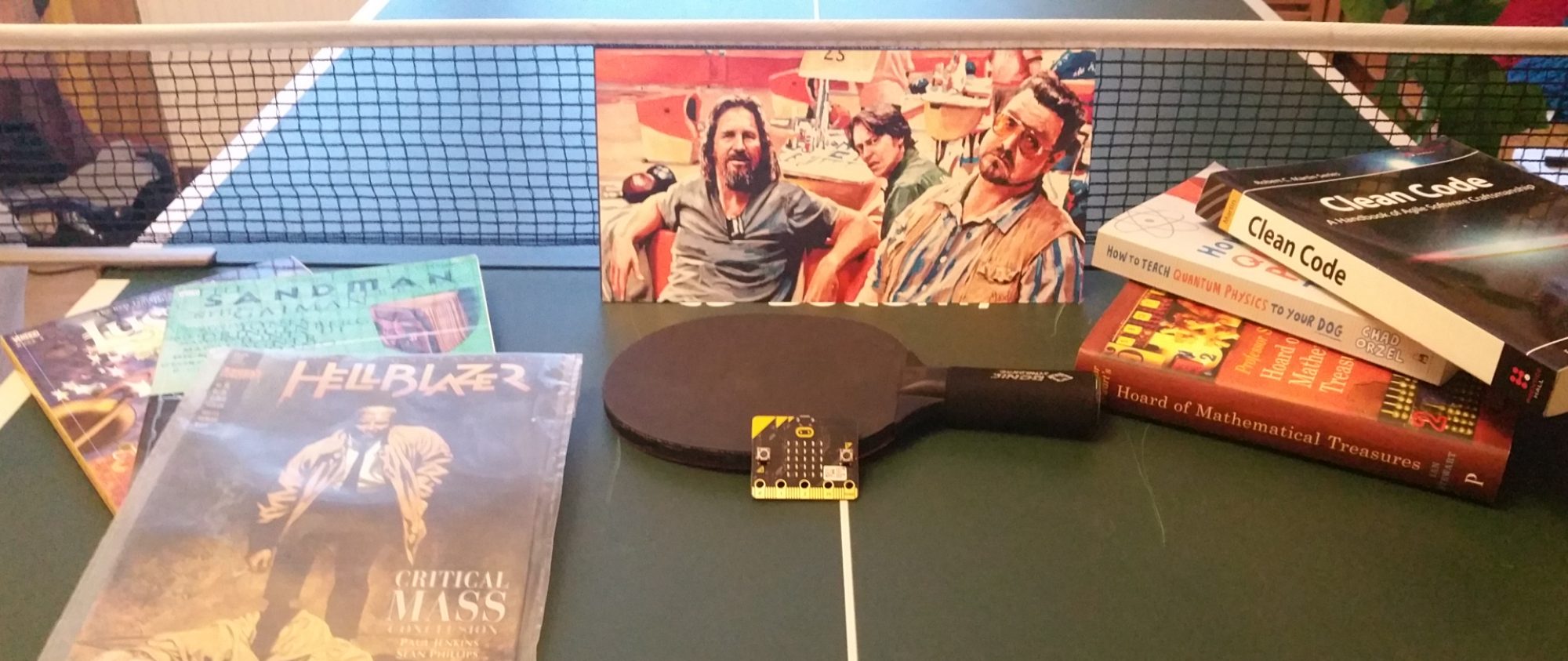Each electronic element of the house was controlled by a micro:bit and each had its own code. All of the code was written in Python, on Mu.
The controller communicated over radio to the electronic devices – this communication was purely 1-way.
I’ve not put any of the code on GitHub for a few reasons:
- The code is simple and quite dirty – there is not of any value for anyone to glean from it.
- There are no clever radio protocols – quite the opposite tbh. I recall an event where @BigLesP and I were at adjacent stands and were both using the same radio frequency (default), causing the house to freeze up repeatedly. As I explained to Les, as a beginner I was allowed to use default radio channel, but the experts should be banned from that channel!!! Les took a bite of his pie and muttered something incomprehensible about dinosaurs and concrete bracing, then went back to gleefully sabotaging my house 😉
- Each electronic thingie had its own code which is specific to the hardware used, so you would need the exact same piece of kit for the code to be of value.
- This really wasn’t a coding project at all – the code was just a small part of the project.
So, I don’t think the code will be of any real use to anyone. I am happy to share it on request though.
Next and final: The micro:bit house (10) – wrap-up
The micro:bit house blog has 10 separate chapters:
- The micro:bit house
- The micro:bit house (2) – design
- The micro:bit house (3) – structure
- The micro:bit house (4) – construction
- The micro:bit house (5) – interior
- The micro:bit house (6) – furniture
- The micro:bit house (7) – electronics
- The micro:bit house (8) – controllers
- The micro:bit house (9) – code
- The micro:bit house (10) – wrap-up

